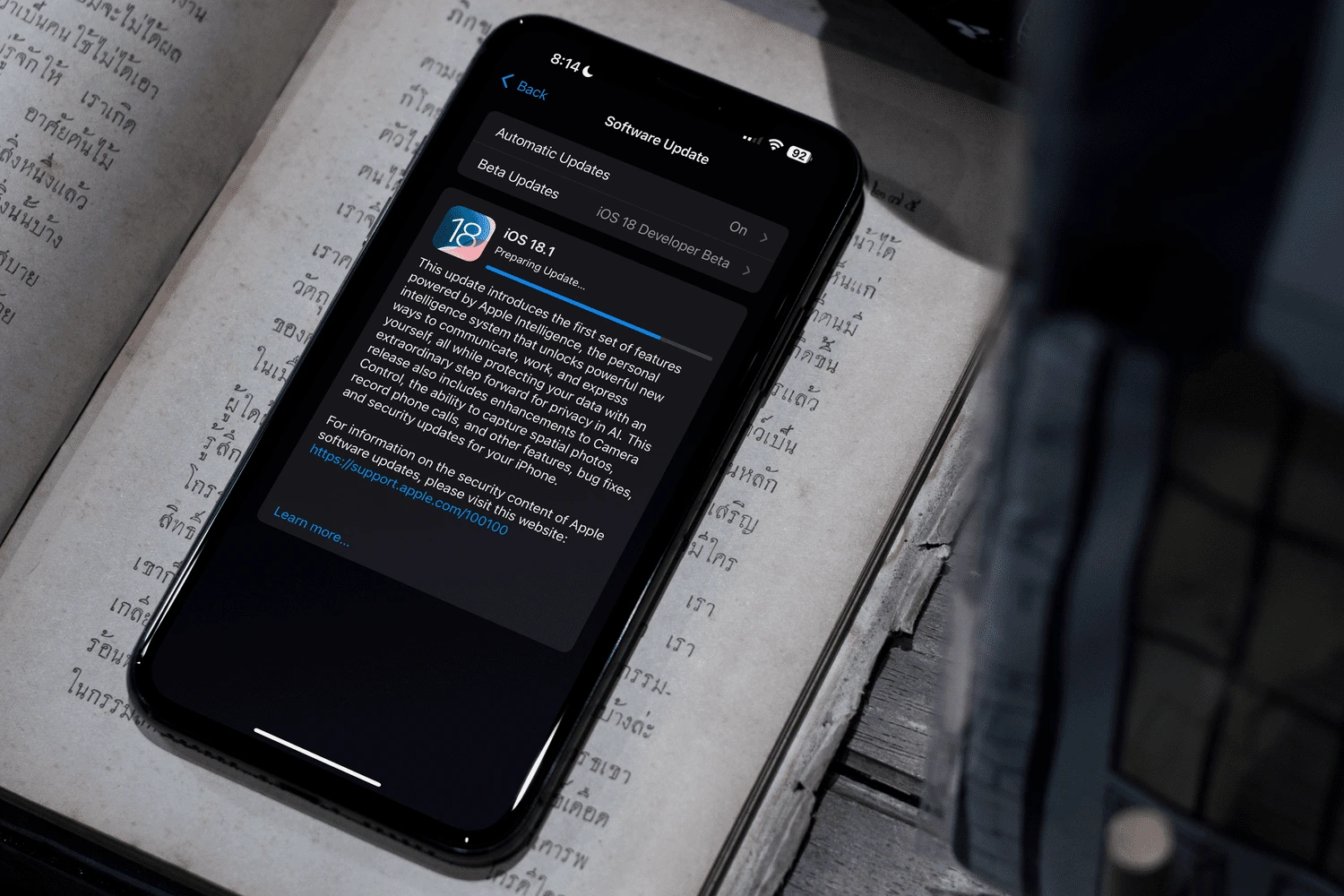Blog
Understanding the Steps Behind Every Installation with the iOS Download Report

In today’s competitive world of app development, understanding how users interact with your app is crucial for improving performance and achieving growth. The iOS Download Report provides an essential resource to help developers, marketers, and product teams gain insights into user behavior, app installations, and marketing effectiveness.
This guide will walk you through how to access the iOS Download Report, interpret its data, and apply the insights to enhance your app’s performance and user engagement.
What is the iOS Download Report?
The iOS Download Report is a detailed log of all app installations from the App Store. It provides data on the number of downloads, the geographic location of users, the type of device used, and whether the download originated from an organic search or a marketing campaign. This report helps developers and marketers understand the effectiveness of their user acquisition strategies.
Key Metrics in the iOS Download Report
The iOS Download Report includes a wide variety of data, but the following key metrics should be closely monitored:
- App Installations: The total number of times your app has been downloaded and installed on a device during a specified time period.
- Geographic Location: Insight into where users are downloading your app, providing a clearer picture of the app’s global reach.
- Device Type: Identifies whether the app was installed on an iPhone, iPad, or other Apple devices.
- Referral Source: Helps you determine whether the download was the result of organic search, paid advertising, or other marketing efforts.
For instance, if a significant increase in downloads is seen in a specific region following a marketing campaign, the report helps verify if the campaign is reaching the intended target audience.
How to Access the iOS Download Report
Accessing the iOS Download Report is relatively straightforward, but it requires you to be a member of the Apple Developer Program. Follow these steps to gain access to the report:
- Sign in to App Store Connect: Go to the App Store Connect website and log in with your Apple ID credentials.
- Navigate to App Analytics: Once logged in, select “App Analytics” from the main dashboard.
- Select Your App: Choose the app for which you want to review the download report.
- Download the Report: Under the “Metrics” section, select “Downloads” and customize your report by specifying the date range and data filters you need.
The iOS Download Report is available in multiple formats, including CSV and Excel, for easy analysis and visualization of the data.
Tips for Accessing the Report
- Regularly Monitor Trends: Download the report regularly to track changes and identify trends over time.
- Use Filters: Narrow down your data by applying filters for specific time periods or regions to get more relevant insights.
Key Metrics in the iOS Download Report
The iOS Download Report contains several important metrics, but focusing on the most relevant ones will help you make informed decisions. Here are the key metrics you should pay attention to:
Total Downloads
This metric represents the total number of times your app was downloaded within a specific time period. It’s the most basic and crucial metric for understanding your app’s performance.
Example: If your app sees a large number of downloads after a promotional campaign, this can be a clear indicator of the campaign’s effectiveness.
Geographic Distribution
Knowing where your users are located helps you understand the global reach of your app. This data allows you to assess regional demand and identify areas where you might need to increase marketing efforts.
Example: A sudden spike in downloads from Europe could prompt you to localize your app or focus marketing efforts in that region.
Device Type
This metric shows whether users are installing your app on an iPhone, iPad, or another Apple device. Understanding device types helps you optimize your app for different screen sizes and user preferences.
Example: If most downloads are from iPhones, you may want to ensure that your app is optimized for smaller screens.
Referral Source
The referral source tells you where the app download originated from, such as an organic search on the App Store, a paid ad, or an external referral link. Understanding your referral sources is crucial for determining the effectiveness of marketing campaigns.
Example: If most downloads come from a paid ad campaign, this can validate your marketing strategy and justify future investments.
Analyzing Trends in the iOS Download Report
Once you have access to the iOS Download Report, it’s time to analyze the data. This can help you understand trends, identify patterns, and make informed decisions.
Spotting Download Peaks
Look for significant spikes in downloads, and try to correlate them with specific events, such as app updates, marketing campaigns, or seasonal changes. Understanding the cause of these peaks can help you plan future campaigns and strategies.
Identifying Long-Term Trends
While short-term spikes are important, long-term trends are even more critical for sustained growth. By examining downloads over weeks or months, you can assess whether your app is experiencing steady growth or seasonal fluctuations.
Example: A steady increase in downloads after a major update could indicate that users are finding more value in the app.
Challenges When Using the iOS Download Report
While the iOS Download Report provides valuable data, there are some challenges to keep in mind when using it:
Data Accuracy
The data provided by the iOS Download Report is generally accurate, but it’s important to keep in mind that some discrepancies may occur due to issues like delayed reporting or inconsistencies between App Store Connect and user-reported data.
Analyzing Large Data Sets
As your app grows and attracts more users, the volume of data in the report can become overwhelming. It’s important to develop efficient processes for analyzing large sets of data to avoid being bogged down by too much information.
Tip: Use data filters and visualization tools to narrow down your analysis to the most important trends.
Best Practices for Leveraging the iOS Download Report
To make the most of the iOS Download Report, here are some best practices to follow:
Regularly Review Your Data
Make it a habit to regularly review your iOS Download Report. This will help you stay on top of trends, identify any issues early on, and make data-driven decisions.
Focus on Key Metrics
While the iOS Download Report provides a wealth of information, focusing on the most important metrics—such as total downloads, geographic location, and referral sources—will help you stay focused and make meaningful improvements to your app.
Combine Data with Other Analytics Tools
For a more comprehensive understanding of user behavior, combine the iOS Download Report with other analytics tools, such as Google Analytics or Mixpanel. This will provide you with a more complete view of your users’ journey and interactions with your app.
Use the Data to Optimize Your Marketing Campaigns
By understanding where users are downloading your app and which marketing campaigns are most effective, you can better allocate your resources and target the right audience.
Example: If a particular social media platform is driving most of your downloads, you can focus more of your marketing budget on that platform.
Expert Insights on the iOS Download Report
According to app marketing expert Sarah Johnson, “The iOS Download Report is a powerful tool for understanding the effectiveness of your user acquisition strategy. By closely monitoring trends in download sources and geographic distribution, you can fine-tune your campaigns to maximize reach.”
Expert advice emphasizes that interpreting the iOS Download Report requires context. For example, spikes in downloads may not always correlate with successful campaigns if users are uninstalling the app quickly after downloading. The goal is to identify not only when downloads occur but also to track user retention and engagement over time.
Conclusion
Understanding the steps behind every installation through the iOS Download Report is essential for optimizing your app’s performance and marketing strategy. By accessing the report, focusing on key metrics, and applying best practices, you can unlock valuable insights that will help you make informed decisions for your app’s future growth.
While the iOS Download Report offers powerful data, it’s important to combine it with other analytics tools and user feedback to get a comprehensive view of your app’s performance. By continually reviewing the data, analyzing trends, and adjusting your marketing strategies, you can ensure that your app reaches its full potential.
Remember, the iOS Download Report is more than just a set of numbers—it’s a roadmap to understanding how users find and interact with your app. By using this data effectively, you can improve user acquisition, retention, and overall app success.
